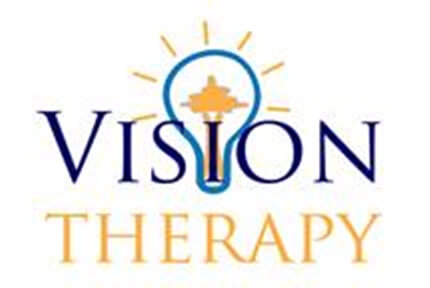By: Vicky d’Entremont and Dr. Debbie Luk

Many children are mislabeled as Attention Deficit/Hyperactivity Disorder aka (ADHD) by parents, teachers, pediatricians and eye care professionals. Have you investigate whether an undetected visual deficit may be mimicking or co-existing with ADHD? Yes, even if your doctor says your child sees 20/20, there can still be a vision problem that can be easily treated with glasses and/or vision therapy.
A child who suffers from visual deficits display characteristics similar to a child with ADHD. Children with vision-based learning problems are highly distractible, have short attention spans, make careless errors, fail to complete assignments in a timely manner, and are often fidgety and off task. However, their inability to remain on task is caused by the discomfort of using their eyes for long periods of time at close ranges, not true deficits in attention.
How do visual deficits mimic ADHD?
The term 20/20 tells us that one can see fine details. However, there is more to vision then reading letters on a chart. The child’s eye-tracking, eye-focusing, eye-teaming as well as visual perceptual skills encompass what good vision should be. These skills should be assessed because of their capacity to alter a child’s behavior. Studies show that approximately 20% of school-aged children, and over 60% of children with learning difficulties suffer from eye-teaming or focusing deficits that make staying on task for long periods of time difficult. The most common visual condition related to ADHD diagnoses is convergence insufficiency (reduced ability for the eyes to focus, read and work at near). Those with ADHD are three times more likely to have convergence insufficiency.
Children with visual deficits experience a multitude of symptoms including: blurry vision, double vision, headaches, eye strain, losing place when reading, skipping or repeating words, poor visual memory, poor reading comprehension, inability to visualize verbal information and many other symptoms. All of these problems cause the child to be frustrated, distracted, inattentive, fidgety, and uncooperative. These children are also more likely to have poor self-esteem.
Often children are unaware of the poor functionality of their eyes. They may not realize the symptoms they are experiencing or they may think everyone sees that way.
How do I determine whether my child has ADHD and/or a visual deficit?
If ADHD is suspected, it is recommended that the functional visual system is checked. Comprehensive eye examinations can screen for visual deficits. In addition, a functional visual examination with a developmental optometrist may be required. Using specialized equipments and standardized testing which takes one to two hours to perform, developmental optometrists check the child’s eye tracking, eye focusing, and eye teaming skills as well as the brain’s ability to interpret what the eyes see (visual perceptual skills).
What treatments are there for visual deficits?
Once the vision problem is identified the optometrist can discuss treatment options with you. A visual deficit can be treated with vision therapy, glasses or both. Recommended treatment options depend on which aspect of vision is affected and the severity of the problem. For more information, please visit: www.covd.org, www.visiontherapycalgary.com and www.learningmanagement.ca
The following chart compares the symptoms of ADD/ADHD with those of vision problems.
| Symptoms | ADHD* | Visual Problems** |
| Inattention | ||
| Often fails to give close attention to details or makes careless mistakes | X | X |
| Often has difficulty sustaining attention in tasks or play activities | X | X |
| Often does not listen when spoken to directly | X | X |
| Often does not follow through on instructions or fails to finish work | X | X |
| Often has difficulty organizing tasks and activities | X | X |
| Often loses things | X | X |
| Often distracted by extraneous stimuli | X | X |
| Often forgetful in daily activities | X | X |
| Often avoids, dislikes or is reluctant to engage in tasks requiring sustained mental effort | X | X |
| Hyperactivity and Impulsivity | ||
| Often fidgets with hands or feet or squirms in seat | X | X |
| Often has difficulty remaining seated when required to do so | X | X |
| Often runs or climbs excessively | X | |
| Often has difficulty playing quietly | X | |
| Often “on the go” | X | |
| Often talks excessively | X | X |
| Often blurts out answers to questions before they have been completed | X | X |
| Often has difficulty awaiting turn | X | X |
| Often interrupts or intrudes on others | X | X |
*DSM IV – Diagnostic and Statistical Manual of Mental Disorders
**American Optometric Association
References:
National Institute for Mental Health. (2012). Attention Deficit Hyperactivity Disorder. Retrieved from NIMH website http://www.nimh.nih.gov/health/publications/ attention-deficit-hyperactivity-disorder/index.shtml
Darmari DA, Liu J, Smith KB. Visual Disorders misgdiagnosed as ADHD. Case Studies and Literatures Review. JBO2000; 11(4):87-91. shttp://www.oepf.org/sites/default/files/journals/jbo-volume-11-issue-4/11-4%20Damari.pdf
Christian, L., Peddle, A., Pennifold, S., Schellenberg, B. (2012, October). Binocular Anomalies in Elementary School Children with Reading Problems: preliminary results from the University of Waterloo School of Optometry and Vision Science, External Pediatrics Clinic. Research presentation at the 42nd Annual COVD Meeting, Fort Worth, TX.

